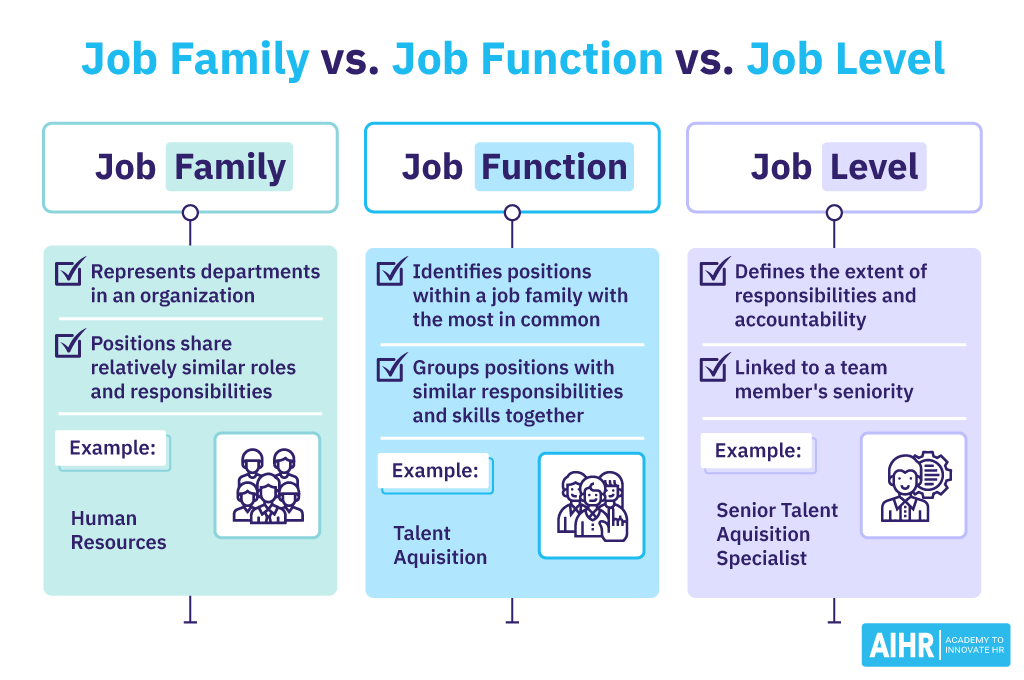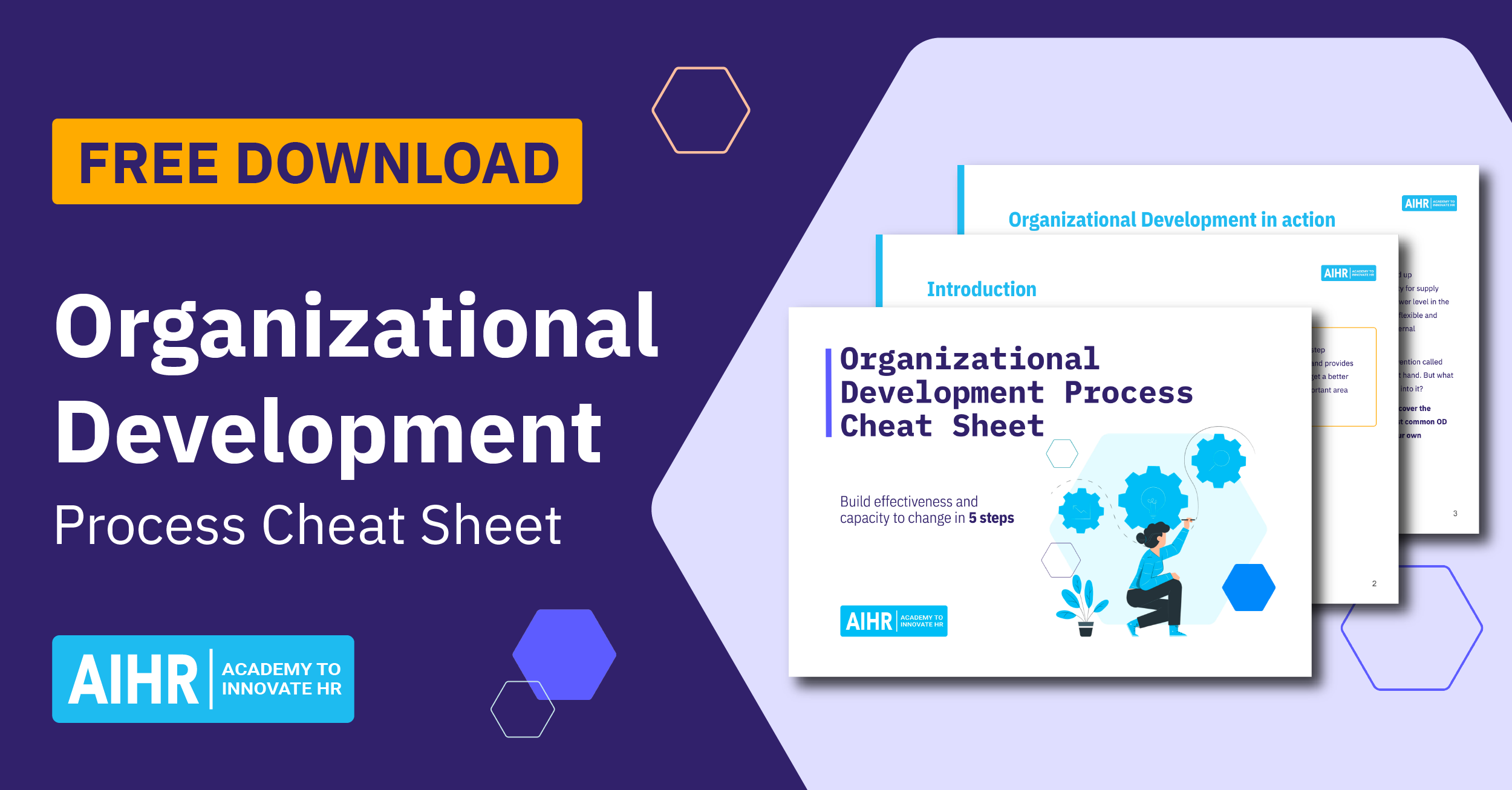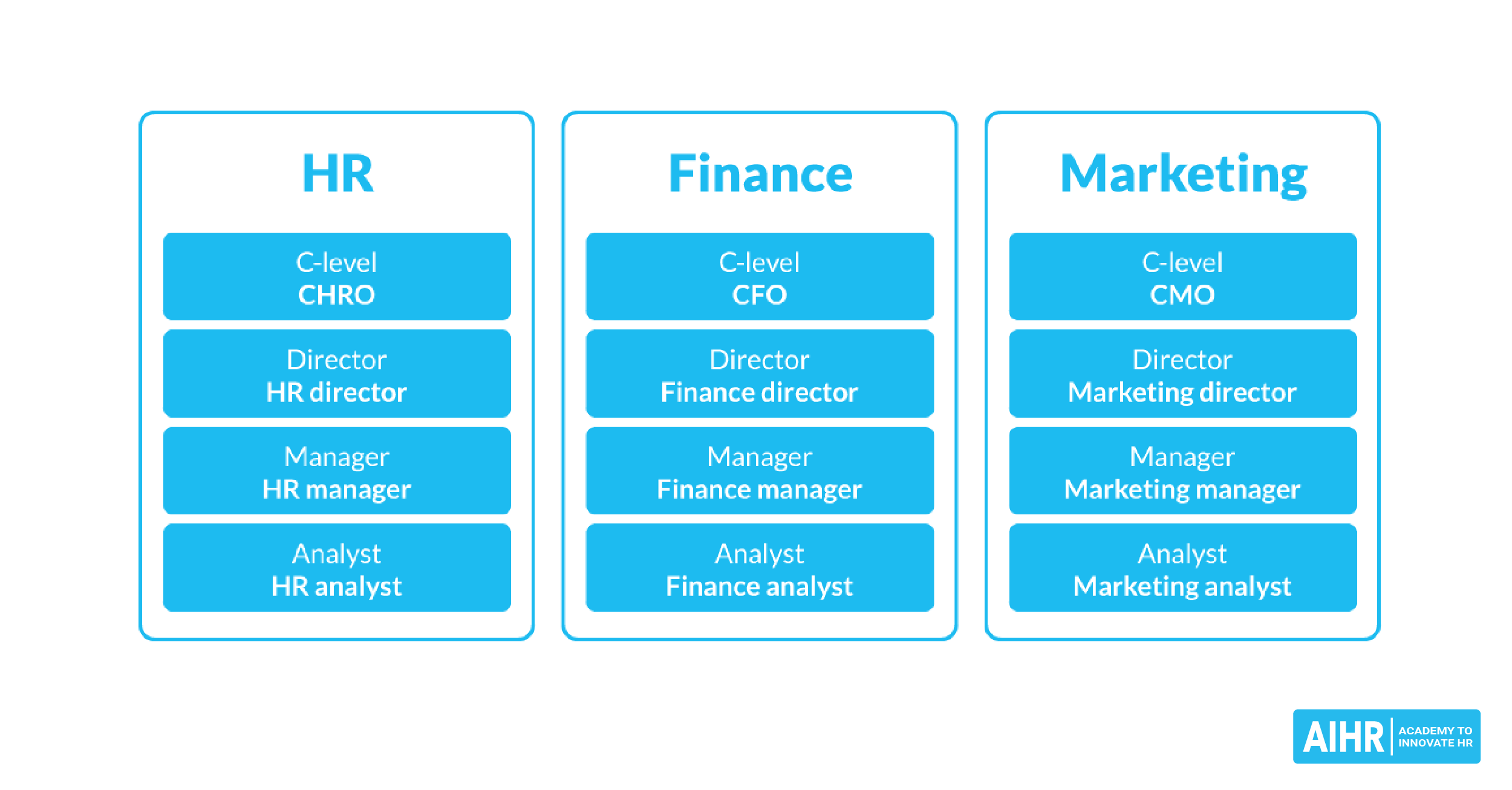Job Family
What is a job family?
A job family is a grouping or classification of related job positions within an organization that share similar characteristics, skills, responsibilities, and career paths.
Job families are used to categorize and organize various roles in a systematic way, making it easier for an organization to manage its workforce, establish compensation structures, and plan for career development and progression.
How are jobs grouped together in job families?
Typically, job families are organized based on similarities in job functions, skill sets, and the nature of work performed.
For example, in a large corporation, the IT department might have a job family that includes roles like software developer, systems administrator, and network engineer, as these positions all require technical expertise and work in a related field.
Job family examples
Job families often consist of the departments that make up your organization. While businesses have unique needs and may, therefore, be structured somewhat differently, certain departments are commonplace in almost every company. Some common job families include:
- Human Resources: Fulfills several HR functions across the employee lifecycle.
- Executive management: The highest level of your organization that makes final decisions and manages the rest of your departments.
- Facility operations: Keeps the organization’s buildings and other facilities clean and running smoothly.
- Marketing: Fulfills multiple functions, including promotion, selling, product/service management, and marketing information management.
- Information technology: Manages the organization’s computers, networks, and other tech needs.
- Legal: Handles the organization’s legal needs.
Job family vs. job function vs. job level
A basic job family is just one element of a larger job family framework, and job functions and job levels also play key roles in determining which positions within your company are similar to one another and should be grouped together.
Here are the key features that separate job families, functions, and levels.
1. Job family
Job families are the most basic level of a more complex job framework. Companies generally begin the process of organizing their companies by grouping positions of a similar nature into families, which generally take on the role of your organization’s departments.
At this level, positions generally share relatively similar roles and responsibilities, but they are not necessarily as similar as job functions.

2. Job function
‘Job function’ refers to similar positions within a job family based on similar skills and responsibilities. For example, within Human Resources (job family), job functions could include Talent Aquisition, Compensation and Benefits, and Employee Relations.
Job functions are usually outlined in job descriptions, specifying the key activities an employee will perform in a particular role. Their overall aim is to provide a clear understanding of the duties involved in a position.
3. Job level
Job levels are largely categorized by the types of responsibilities that team members in these positions have and the overall amount of accountability that holds them to those responsibilities.
A team member’s job level is often linked to their seniority in your field and within your company, as well as the amount of education that was required to earn their position
However, their specific skills, overall competence, and ability to successfully handle the more complex responsibilities that come with a higher-level role are some of the most important elements of determining job levels.
How can job families help HR?
Job families help HR departments and management in several ways:
- Compensation: Organizations often use job families to develop consistent and fair compensation structures. Similar jobs within the same job family can have similar pay scales, which helps ensure equitable compensation for employees.
- Career development: Employees within a job family can see a clear career progression path, making it easier for them to set goals and plan for advancement within their chosen field.
- Recruitment: When hiring, HR can refer to job families to identify the skills and qualifications needed for a particular role. This makes job postings more targeted and relevant.
- Training and development: Job families allow organizations to identify common training and development needs among employees in similar roles. This helps with the creation of training programs tailored to specific job families.
- Succession planning: Knowing the job families within an organization helps identify potential successors for key roles. HR can identify individuals with the skills and experience needed for leadership positions.







